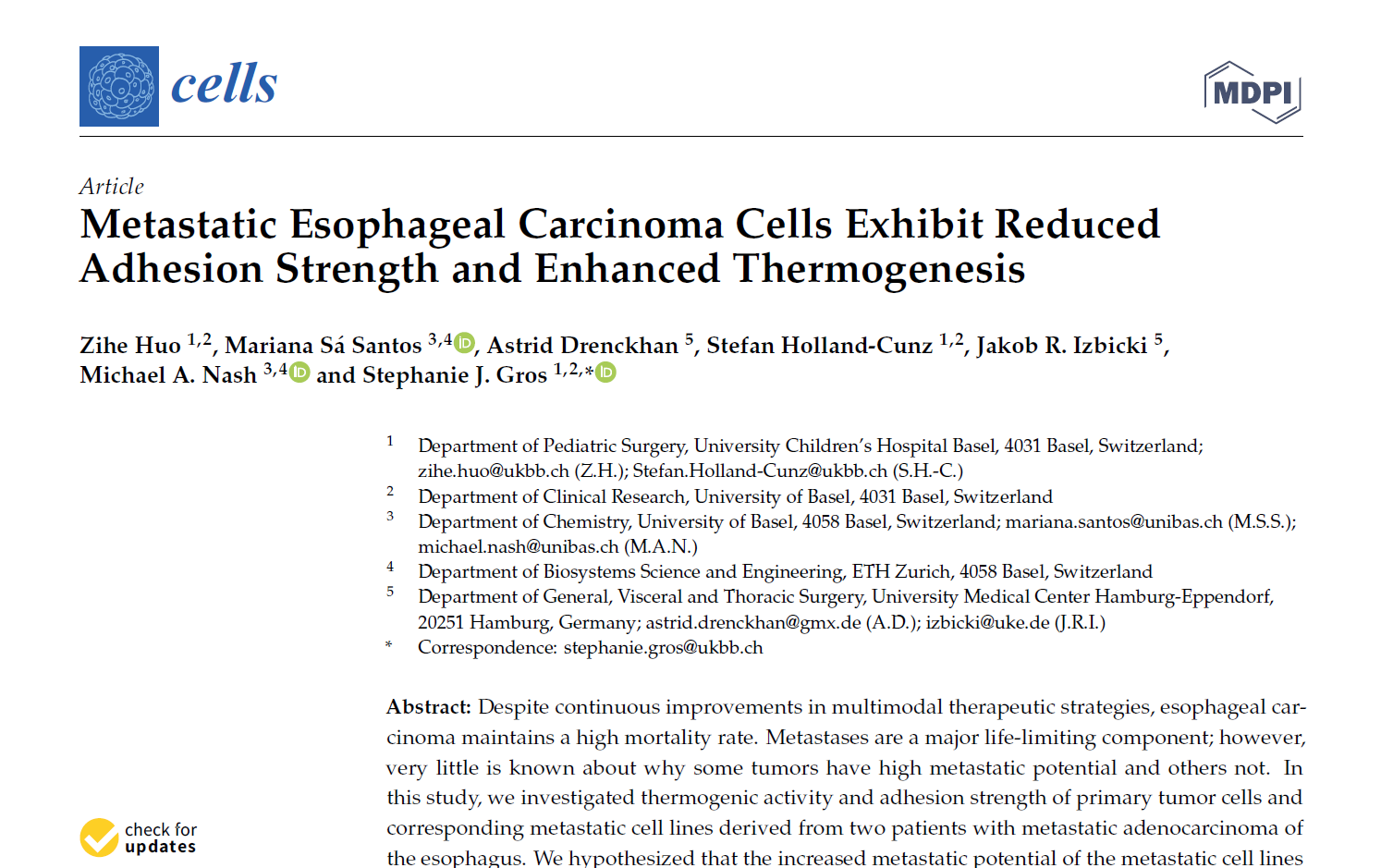Metastatic Esophageal Carcinoma Cells Exhibit Reduced Adhesion Strength and Enhanced Thermogenesis
(STOCKHOLM) Symcel — a company providing real-time metabolic measurements for cell culture with their product the calScreener™ ̶ was recently featured in a peer-reviewed publication showing that metastatic potential of certain tumours is related to the thermogenic activity as measured by the calScreener.
The work published in Cells was the first ever study to use paired cell lines derived from primary tumours and lymph nodes to compare the thermogenic activity of tumours at different sites.
The research led by Dr. Stephanie Gros showed that cell lines derived from metastatic tumours had a higher thermogenic activity compared the corresponding primary tumour cell line isolated from the same patient.
This research is incredibly valuable as esophageal carcinomas still have a high mortality rate. Understanding that thermogenic activity is related to metastases is a key finding that will help researchers and clinicians to evaluate new treatments that can reduce the metabolic output of tumours. The calScreener was not only important for discovering this insight but also presents a clear way to test new treatment options in the future.
Gaining deeper insight in to cancers associated with a high mortality rate is essential to improving patient outcomes in the future. While not performed in this study, the calScreener is an effective way to measure the metabolic output of tumour biopsies meaning that in the future, this method could be used to give a rapid and direct readout of how dangerous a tumour is. Furthermore, the flexibility of the calScreener and the ability to measure small biological samples means that this method could potentially be used to evaluate different treatment options for an individual patient, allowing a personalised medicine approach for cancers.
The metabolic readout provided by the calScreener has been shown to be an effective way to measure the metastatic potential of tumours. If you would like to discuss how this could be used in your work, please contact us here and speak with one of our experts.
